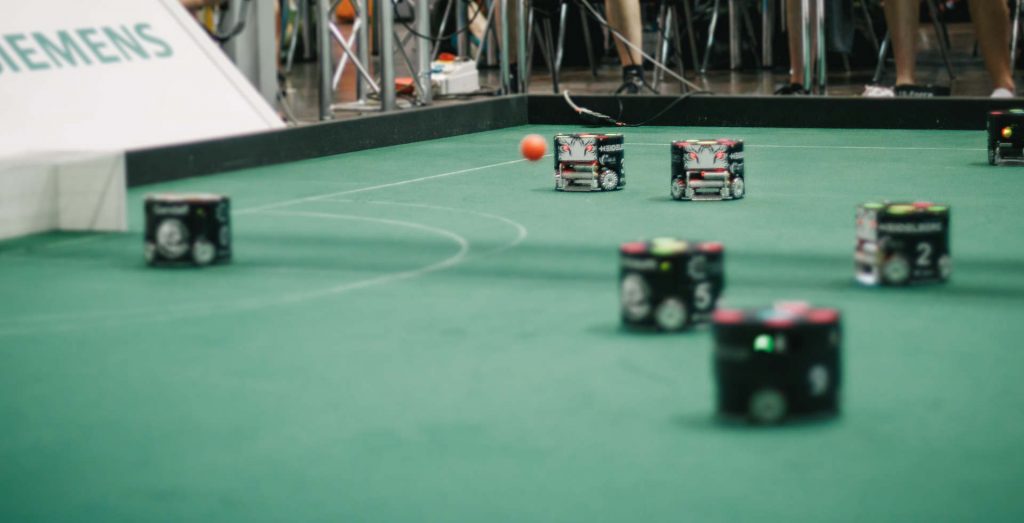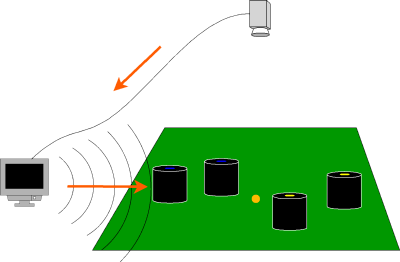The RoboCup Federation
RoboCup is an international scientific initiative with the goal to advance the state of the art of intelligent robots. When established in 1997, the original mission was to field a team of robots capable of winning against the human soccer World Cup champions by 2050.
Small Size League
RoboCup Small Size League robot soccer focuses on the problem of intelligent multi-agent cooperation and control in a highly dynamic environment with a hybrid centralized/distributed system.

A Small Size robot soccer game takes place between two teams of eight (six in division B) robots each. By 2020, 11 vs. 11 robots will play against each other. Each robot must conform to the dimensions as specified in the F180 rules: the robot must fit within an 180 mm diameter circle and must be no higher than 15 cm. The robots play soccer with an orange golf ball on a green carpeted field that is about 12 m long by 9 m wide.
All objects on the field are tracked by a standardized vision system that processes the data provided by multiple cameras that are attached to a camera bar located about 4 m above the playing surface. The vision system is an open source project maintained by the league’s community.
Off-field computers are used to communicate referee commands and position information to the robots. Typically, these computers also perform most, if not all, of the processing required for coordination and control of the robots. Communication to the robots is wireless and typically uses dedicated commercial FM transmitter/receiver units.

Building a successful team requires clever design, implementation and integration of many hardware and software sub-components into a robustly functioning whole making Small Size robot soccer a very interesting and challenging domain for research and education.